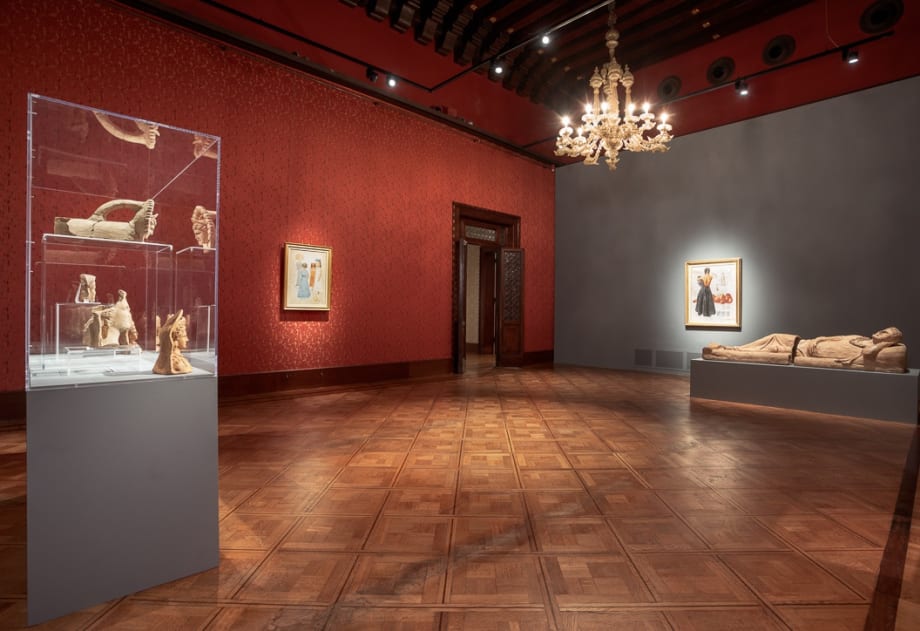Massimo Campigli and the Etruscans
A pagan happiness
ACP - Palazzo Franchetti, Venezia
22 May - 20 September 2021
«A pagan happiness entered in my paintings, both in the spirit of the subjects and in the spirit of the work, which became more free and lyrical». It is with these words that Massimo Campigli himself describes his visit to the Etruscan Museum of Villa Giulia in Rome in 1928, giving it a fundamental value for the development of the mature phase of his artistic production. And it is from these words that the exhibition at ACP - Palazzo Franchetti in Venice takes shape, offering a dialogue between the master's artworks and the examples of the past from which he drew such a strong inspiration. The nearly 35 works by Campigli selected for the exhibition are placed alongside about fifty archaeological finds from the Etruscan civilization, most of them undisclosed and here exposed for the first time, identified by the Superintendent Margherita Eichberg together with Scientific Committee scholars Leonardo Bochicchio, Simona Carosi, Daniele Federico Maras, Rossella Zaccagnini, supported by the research director Arch. Giovanni Cesarini. The exhibition can also count on the precious scientific support of art historian Martina Corgnati, curator of the show.
It is a profound dialogue the one created in the rooms of the noble floor of ACP - Palazzo Franchetti. The deliberately archaic compositions realized by Campigli, well represented in the exhibition with paintings ranging from 1928 to 1966, rediscover the origin of their deeper inspiration in the displayed Etruscan finds, establishing with them a natural sharing of atmospheres, signs and colours. Starting from the famous visit to the Etruscan Museum of Villa Giulia in Rome in 1928 we see a sort of return to a primordial purity in Campigli's art, an ancient flavour made of soft colours as if they were painted in a fresco and so similar to how time gave the Etruscan images back to us, of shapes moulded according to the drawing of votive statues or amphoras, of female figures with hourglass shaped busts which turn into timeless images. The typological richness of the finds presented in the exhibition - from pots to figurines, from jewels to sarcophagi, etc. - let us trace an alphabet and a universe of links which, starting from general evocations, are proposed as precise references in the exhibition's different sections: the first one is dedicated to the human figure, divided into men and women; the second one to animals, made of birds, horses, wild animals and lastly the third one to shapes and geometries. Many finds are undisclosed, and come from important recovery operations of archaeological material, even from famous international museums, now in the availability of the Soprintendenza Archeologica Belle Arti e Paesaggio per l'Area Metropolitana di Roma, la Provincia di Viterbo e l'Etruria Meridionale. Two precious terracotta sarchofagi from the Museo Civico of Viterbo certainly deserve a special note.
Through the call of these expressive languages belonging to a glorious civilization of the past, the art of Campigli reveals a profound originality in the coexistence between ancient splendours and current events, involving the visitor in a dimension where time seems to stop or to quietly flow in a imperturbable stillness. It shows us a twentieth century which is contemporary to the most ancient Mediterranean eras, writing a very interesting page of what the archeologist Massimo Pallottino defined as an "Etruscan novel", a myth which since the Reneissance keeps on exerting a strong fascination from generation to generation.
